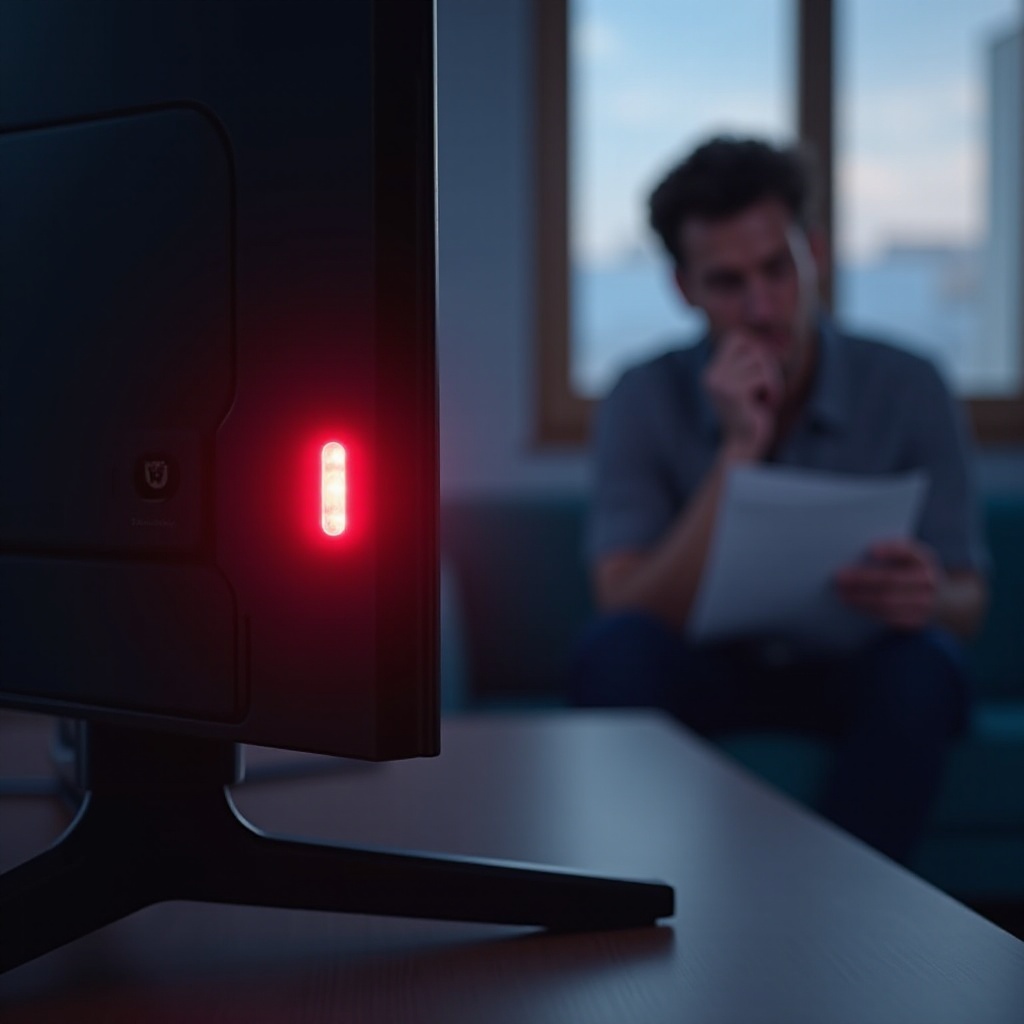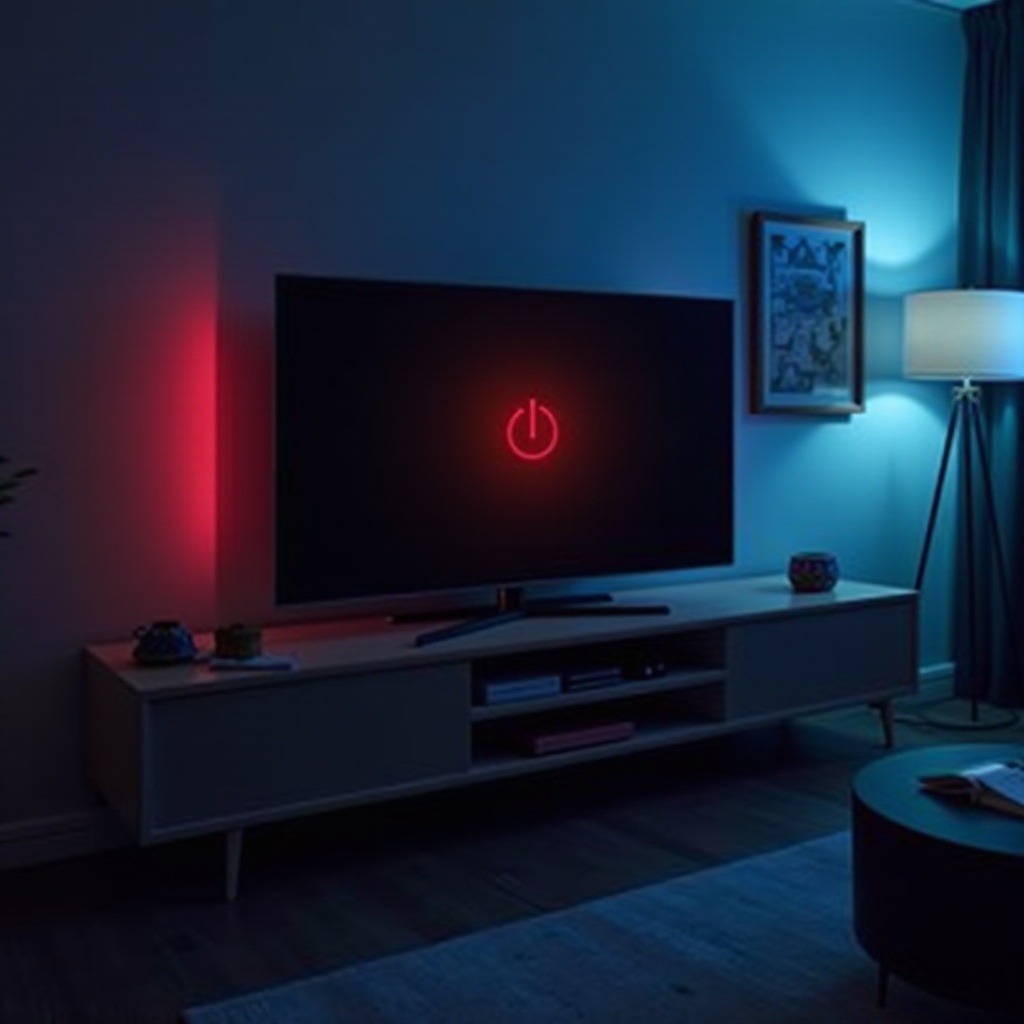Introduction
Running into a problem where your Samsung TV shows a red light but refuses to turn on can be quite inconvenient. However, this issue is often solvable with a few simple troubleshooting steps. It could be as minor as a loose connection or something more complex.
This guide aims to provide you with an understanding of what the red light means, essential checks, and step-by-step methods to get your Samsung TV working again. With patience and a systematic approach, you can resolve the problem and return to enjoying your favorite shows.

Understanding the Red Light Indicator on Your Samsung TV
The red light on your Samsung TV serves as a status symbol, indicating your TV might be in standby mode, but it can also point to power issues or internal malfunctions if it stays on persistently. Understanding this light is the first step to diagnosing and addressing your TV’s problem effectively.
Initial Setup and Appliance Check
Before diving into more complex troubleshooting, start with these initial checks. A common cause of the red light issue is often a simple power mishap. Confirm that your TV is plugged in properly, and verify the functionality of your power outlet by testing it with another device. This can quickly rule out power issues associated with your setup.
Check the following:
- Make sure the power cable is securely connected to both the TV and the socket.
- Test the outlet by connecting another device.
- Bypass any power strips or surge protectors temporarily to eliminate them as a variable.
These steps establish a baseline for distinguishing between simple issues and more complex problems.
Step-by-Step Troubleshooting Guide
Once you’ve completed the basic checks, move on to detailed troubleshooting to refine your approach.
Conduct a Soft Reset of Your Samsung TV
Conducting a soft reset can often resolve minute glitches affecting system performance.
- Unplug your TV from the power outlet.
- Wait for a minimum of 30 seconds.
- Plug it back in and try turning it on.
This technique often resolves minor glitches by rebooting the system without interfering with your stored settings.
Verify the Condition of Power Cables and Connections
Take a moment to assess your cabling setup.
- Inspect power cables for any damage or frays.
- Reconnect all cables to ensure they are firmly seated.
- Consider trying an alternative power cable if one is available.
Cables can be easy to overlook but addressing them early can lead to quick resolutions.
Checking the Remote Control and Built-in Power Button
When the remote presents problems, sometimes the TV’s built-in power button is a simpler alternative.
- Test the remote by replacing the batteries or using another remote.
- Clear any obstructions between the remote and the TV.
- Use the TV’s power button directly to bypass any remote-related issues.
Advanced Troubleshooting Techniques
If standard troubleshooting proves ineffective, consider more advanced options to continue diagnosing your TV’s issues.
Firmware Updates and Software Resets
Firmware updates are essential in resolving operating issues that crop up as technology evolves.
- Check Samsung’s website for available firmware updates.
- Follow the manufacturer’s instructions to download and install updates via USB.
If updates do not resolve the issue, perform a factory reset:
- Access the menu on your TV.
- Go to ‘Support’ and select ‘Self Diagnosis’.
- Choose ‘Reset’ to restore default settings.
This process can help eliminate software-related malfunctions by resetting the TV.
Testing the TV’s Internal Power Supply
Testing internal components requires some electronics acumen.
- Listen for clicking noises, which may point to faulty capacitors.
- If you are confident, consider opening the back panel to inspect for blown components.
Given the risks, this is best done either with sufficient knowledge or by a qualified technician.

When to Seek Professional Repair Services
In some cases, professional assistance becomes necessary, as internal damage or hardware failure might be challenging to identify and fix at home.
Seek professional help if:
- Troubleshooting doesn’t resolve the issue.
- The TV shows physical signs of damage or emits strange noises.
- You are not equipped to safely disassemble your TV.
Experts have the necessary expertise to diagnose and rectify issues that are not immediately visible.

Preventive Tips to Avoid Future Power-On Issues
To avoid similar issues down the road, consider adopting these preventive habits:
- Regularly update the TV’s firmware.
- Use high-quality surge protectors.
- Properly power down the TV when it’s not in use to prolong its lifespan.
By proactive maintenance, you protect your Samsung TV from common problems and ensure its optimal performance.
Conclusion
By following the outlined steps in this guide, you can effectively tackle your Samsung TV’s red light issues. Whether it’s a simple oversight or a more complex dilemma, these structured solutions help ensure you can resolve most problems efficiently.
Frequently Asked Questions
Why is the red light on my Samsung TV blinking?
A blinking red light generally indicates a power supply issue or potentially an overheating problem. Ensure your TV has proper ventilation and check all power connections.
Can a power surge cause my Samsung TV not to turn on?
Yes, power surges can damage electronic components and lead to power failures. To safeguard your TV, always use surge protectors.
Is it worth repairing an older Samsung TV that won’t turn on?
Weigh the repair costs against the TV’s age and current value. If the repair expenses surpass half the price of a new TV, it might be more cost-effective to consider a replacement.